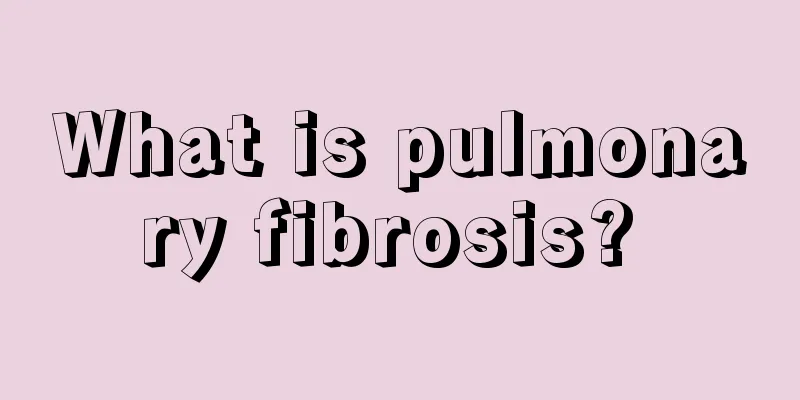What is pulmonary fibrosis?

|
Pulmonary fibrosis is a relatively common disease. This disease usually causes changes in the lung function tissue and body cells. It may even cause damage to the lungs and have an impact on the human body. Generally, most of them are related to some problems, so everyone should be vigilant in normal times. You just need to understand the problem of the disease clearly and treat it. Pulmonary fibrosis is the name of a disease. The interstitial tissue of the lung is composed of collagen, elastin, and protein sugars. When fibroblasts are damaged chemically or physically, they secrete collagen to repair the interstitial tissue of the lung, thereby causing pulmonary fibrosis. This is the result of the body's repair after the lungs are damaged. Etiology and pathology Most interstitial lung diseases share a common underlying pathological process. The initial injury is followed by alveolitis, and as the inflammatory-immune response progresses, pulmonary fibrosis eventually leads to irreversible scarring (fibrosis) of the alveolar walls, airways, and blood vessels. Inflammation and abnormal repair lead to the proliferation of lung interstitial cells, which produce large amounts of collagen and extracellular matrix. The normal structure of the lung tissue is replaced by cystic cavities, which are surrounded by thickened fibrous tissue. This is the late stage of "honeycomb lung". Pulmonary interstitial fibrosis and the formation of "honeycomb lung" lead to the permanent loss of alveolar gas-exchange units. Alveolar collapse during the development of pulmonary fibrosis is a result of the loss of epithelial cells. The exposed basement membrane can directly contact and form fibrous tissue, and a large number of alveoli collapse to form dense scars, resulting in honeycomb-like changes. Honeycombing is a manifestation of scarring and structural reorganization. After lung injury, whether the result of repair is fibrosis or restoration of normal anatomical structure depends on whether the exudates and debris in the alveoli can be effectively cleared. If the exudate in the alveoli is not cleared, fibroblasts and other cells will invade and proliferate (immunohistochemical staining has confirmed that proteoglycans, integrins, junctions, etc. can be found in fibroblast foci. These characteristics indicate that fibrosis is an active progression rather than a sequela of "old" fibrous tissue.), thereby causing progressive progression of pulmonary fibrosis. |
<<: What kind of scented tea tastes good?
>>: What to do if straw mushrooms taste bitter
Recommend
Can expired soybean oil still be consumed?
Soybean oil can generally be eaten after it has e...
What are the folk remedies for treating liver cancer? Top ten folk remedies for treating liver cancer are recommended
The main clinical manifestations of liver pain ar...
The impact of gallbladder cancer removal on fertility
Cholecystectomy is a commonly used operation in b...
Do lobsters eat steamed buns?
In the summer, people like to eat at roadside sta...
Early symptoms of esophageal cancer
The early symptoms of esophageal cancer include p...
Testicular cancer care plan
We all know the pain of testicular cancer treatme...
Benefits of cold water bath
Cold water bath is now very popular in our countr...
What are the auxiliary diagnostic methods for lymphoma
Although lymphoma has some clinical manifestation...
Five common symptoms of early bone cancer
Cancer is the biggest killer of human health, and...
Lustful men are more susceptible to prostate cancer. What is the cause of prostate cancer?
Prostate cancer threatens not only the safety of ...
Aerobic exercise heart rate
Nowadays, people have higher and higher requireme...
What are the side effects of chemotherapy for lung cancer? Five things to note
When treating lung cancer, many people choose che...
How to judge epididymal nodules
Under normal circumstances, the male epididymis i...
Is it good to wash your face with toothpaste?
We all know that toothpaste is used for brushing ...
How to effectively treat vesicular tinea manuum
Vesicular tinea manuum is a type of tinea manuum....









